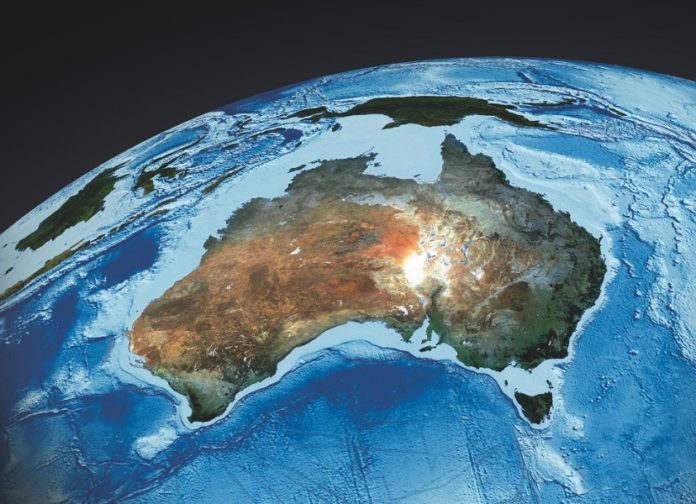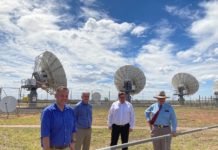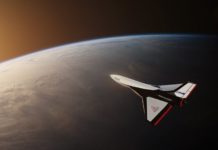The Australian Space Agency began operations on 1 July 2018, and has since been busy mapping the future of Australia’s space industry.
At the Space Industry Association of Australia’s (SIAA’s) Fourth Annual Distinguished Lecture held last week, Dr Megan Clark, Director-General of the Agency, shared more about the Australia’s strategic priorities in space, and what the agency hopes to achieve.
The role of the Australian Space Agency
According to Clark, the Australian Space Agency (ASA) was established for one clear purpose – “to grow and transform Australia’s space industry”, adding that everyone who had earlier advocated for a space agency was united in wanting it to be industry-focused.
She elaborated, “We’re entering at a really important time. We’re entering at a time space is moving from predominantly the government domain into the commercial domain…
We will be one of the most industry-focused agencies in the world. We have to be, because we’re small and we don’t have a lot of money. But we do believe this is where the future is going”.
In addition to growing Australia’s space industry, the agency will work towards expanding the use of space technology in other sectors, such as agriculture, mining, and Oil & Gas. To illustrate this, Clark cited the example of Australian mining company Rio Tinto’s AutoHaul project, which will be the world’s first autonomous heavy haul rail network, as well as its use of autonomous trucks. Such projects, she said, can be expanded and will require the use of space technology.
The Agency’s 6 Strategic Priorities
Based on reviews conducted over the past few years, the ASA has identified six strategic priorities. These are the areas it believes will allow Australia’s space industry to compete globally, while addressing the needs of the country.
1) Communication
Within the field of space-based communication, Clark highlighted several areas, including the need to improve Australia’s connectivity.
She pointed out that, while 99% of Australian residents have mobile phones, only 30% of the geographic area of the country is connected. The agency, she said, will aim to connect not only the entire Australian landmass, but also its airspace and maritime jurisdiction, which is one of the largest in the world.
Aside from traditional satellite connectivity, the agency will also endeavor to develop technologies such as laser communication, high-altitude platforms, and small satellite constellations.
Another area of focus would be ground stations, which Clark remarked “very few countries would put in their strategy.” Australia, however, is in a unique position, having a clear view of the solar system and the Milky Way, and covering “12% of the world’s rotation”.
2) Position, Navigation, and Timing
Another pressing need the agency will address is improving Australia’s GPS accuracy. According to Clark, the recent government investment into GPS technology will bring Australia from having only 5-10m accuracy to 10cm accuracy across the country. More than that, she said, the budget “provided $64m so that in our capital cities…we will have 3cm accuracy from GPS. That is going to be world-leading”.
3) Space Situational Awareness
Because of Australia’s regional position, as well as its desire to become a responsible global player in the space industry, the agency has placed importance on space situational awareness.
One key aspect of this, said Clark, is the monitoring of space debris. Australia, said Clark, will be “a key part of the US’s tracking of debris”. The agency will also be “part of the military node”, she said, to monitor anti-satellite systems and “develop resilient and advanced communication networks, and have resilient constellations in space that give us more security”. Part of this, she pointed out, would be to develop on-orbit servicing technologies.
4) Earth Observation
In the field of Earth Observation, Australia will “step down a little”, Clark said, and will not attempt to develop or launch its own Earth Observation satellites.
Instead, the agency will focus on developing and commercializing data-processing technologies, a field which the country has already worked in extensively.
She elaborated, “While other countries were spending hundreds of millions of dollars to put satellites up, Geoscience Australia [the government agency handling geoscientic research] took 30 to 40 years of data….and [corrected] every 10 square kilometres across our land and coastal region. They created, for every one of those 10 square km, a series of views over time. No other country has done that. We are going to export that technology, and hopefully make that a global standard…and Australian companies can now just sit on top of that and produce data that’s useful”.
5) Research & Development
Australia will set up research in astronomy, particularly radio astronomy, which is its strength. On top of that, the agency will promote nascent fields of research which it believes Australia has the potential to be a global leader in. Examples Clark cited include Artificial Intelligence (AI), robotics, data analytics, Internet of Things (IoT), cybersecurity in space (quantum keys, quantum mechanics), optical laser capability, and next-generation propulsion.
6) Earth to Space, and Space to Earth
“Earth to Space, Space to Earth” is what the ASA has dubbed the use of space technologies on Earth, and vice versa. For example, robotics used in the International Space Station (ISS), Clark said, would be beneficial to Australia’s mining industry. Likewise, Australia’s remote asset management capabilities, currently based mainly on the ground, could potentially be expanded to space.
On launch capabilities
According to Clark, the ASA will not pursue launch capabilities for the time being, but will support the country’s commercial launch service companies.
She said, “It’s quite hard to see the supply-demand position [of launch] right now. What we decided in the review was that this was not recommended for the taxpayer’s dollar, but if there’s a commercial opportunity, then there’s a role for government to support and facilitate that”.
Revising Australia’s Space Activities Act
The agency is currently in the process of reviewing the country’s Space Activities Act, which came into effect in 1998.
Said Clark, “The technology’s changed, and we don’t want to inhibit innovation. Really, things have changed fundamentally – the cost, the entry, the mechanisms, the orbits, have all changed, and so we need to upgrade our frameworks and our legislation”.
One specific regulatory amendment currently being reviewed is the Space Activities Amendment (Launches and Returns) Bill 2018, which aims to reduce barriers to launching in Australia, such as reviewing insurance fees.
International Collaboration
According to Clark, the agency “must be underpinned by very strong international partnerships and engaging nationally”. To this end, the ASA is already working on cooperation agreements with the US, the UK, France, Canada, ESA, and Japan, and is in touch with others.
The agency is also looking at potential joint missions in space exploration, although it will not initiate large Australia-led missions.
Said Clark, “We’re already looking at potential joint missions, through the lens of how do we get Australian technology up and showcase what we’re doing with our industry, and also how those missions can provide a broader value to our economy….[We don’t have] the budget that someone like NASA does, to fund significant missions, but we absolutely want to be part of those where it makes sense of Australia”.







